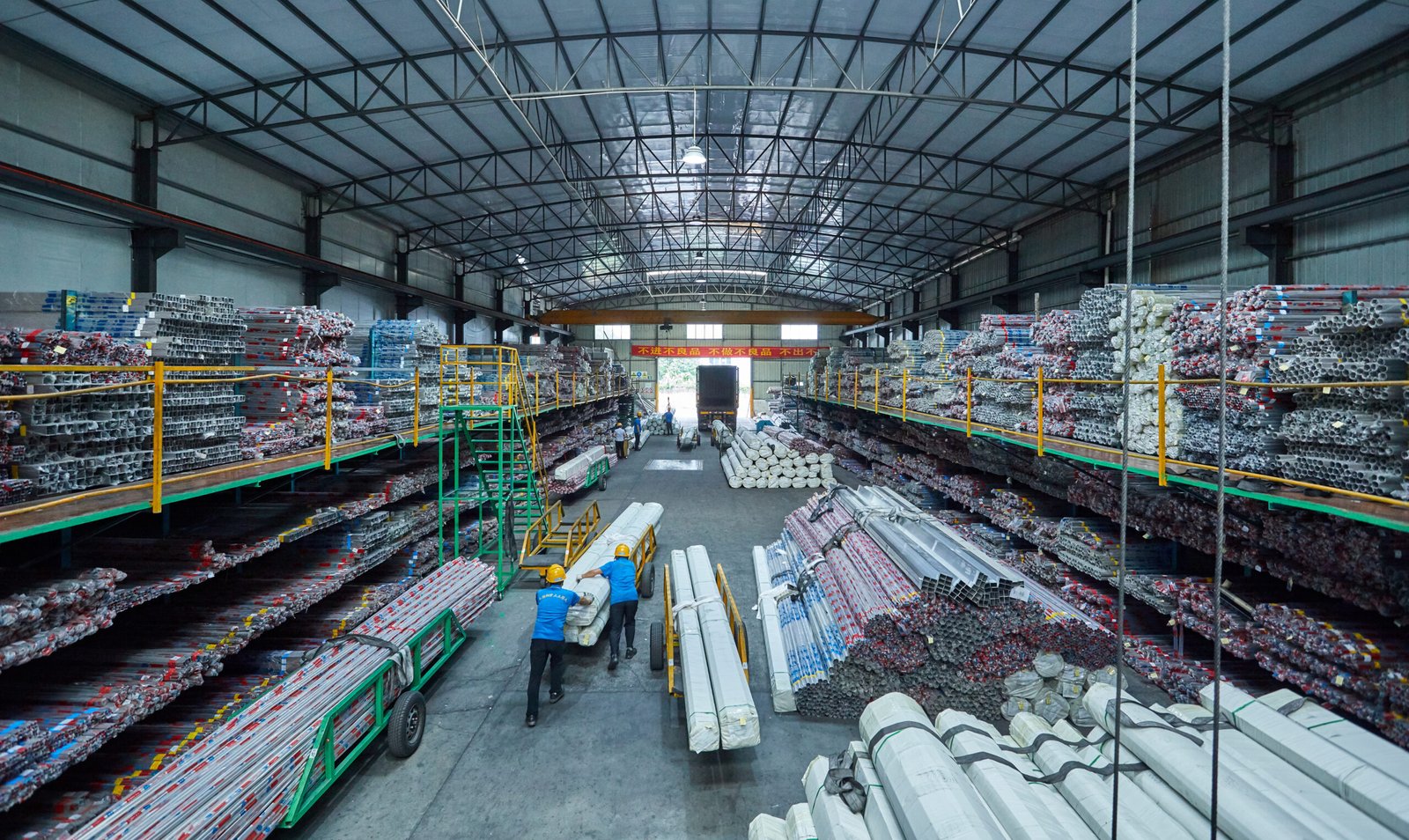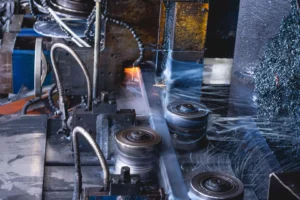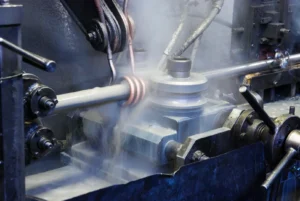Pipe Sizes & Schedules: Your NPS vs DN Cheat-Sheet
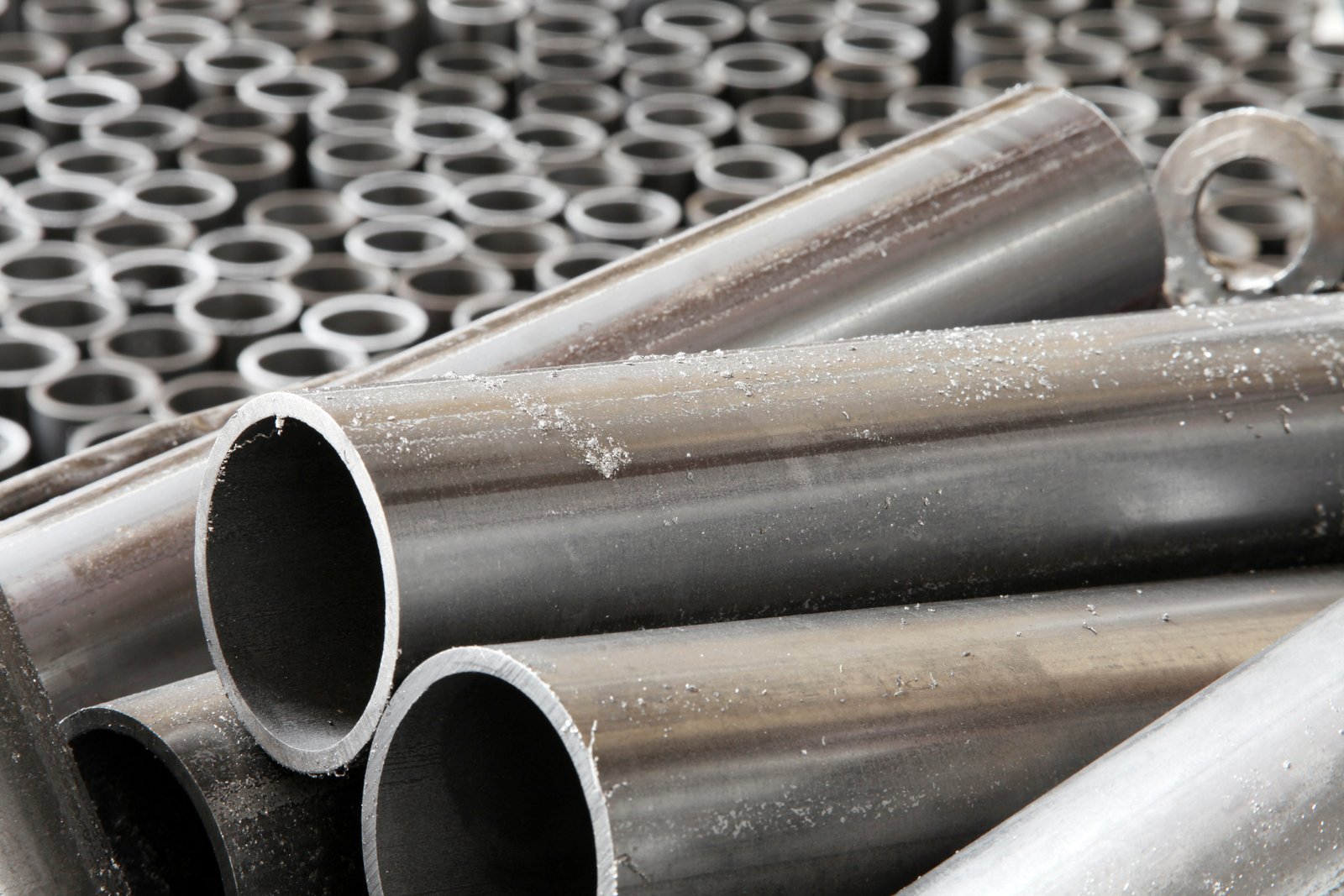
Are you finding the world of pipe sizing, with its NPS and DN terminologies1, a bit perplexing? This confusion can unfortunately lead to incorrect specifications, project delays, and budget overruns. As your partner in stainless steel solutions, I'm here to provide a clear guide to navigate these critical standards.
Nominal Pipe Size (NPS) and Diamètre Nominal (DN) are standardized alphanumeric designations used globally to define pipe diameters. NPS is primarily the North American standard (in inches), while DN is the international metric equivalent (in millimeters), both indicating a nominal, not exact, dimension.
Understanding the nuances between NPS and DN is more than an academic exercise; it's fundamental to the success of any piping project, from initial design to final installation. Getting this right ensures compatibility, safety, and efficiency. At MFY, we frequently guide our clients through these complexities, leveraging our deep industry knowledge.
In my years as Global Business Director at MFY, I've seen how critical a firm grasp of these standards is. The choice and correct interpretation of pipe sizes impact everything from material procurement to system performance. This isn't just about numbers; it's about the integrity of an entire project. For instance, the global nature of modern engineering and construction means components sourced from different regions must seamlessly integrate. A project in India might involve equipment from Europe (DN-specified) and a design team accustomed to US standards (NPS). Without a clear understanding and proper conversion, costly mismatches are almost inevitable. We've helped numerous clients, from large-scale construction contractors in the Middle East to specialized manufacturing units in Southeast Asia, bridge this gap, ensuring their stainless steel pipe requirements are met with precision. This guide aims to distill that experience into actionable insights for you.
What are NPS and DN in the context of pipe sizing?
Struggling to differentiate between NPS and DN in pipe specifications? This uncertainty can lead to ordering the wrong materials, causing significant setbacks. Let me clarify these fundamental terms to empower your decision-making.
NPS, or Nominal Pipe Size, is the standard used in North America, typically denoting pipe diameter in inches. DN, or Diamètre Nominal, is its metric counterpart used internationally, particularly with ISO and EN standards, expressed in millimeters.
These designations are the bedrock of pipe selection, but they represent a nominal dimension, not necessarily the exact measured diameter. Think of them as industry-standard labels that ensure components from different manufacturers can fit together. For example, at MFY, when we supply stainless steel pipes to a manufacturing client in India who might be using a mix of legacy American equipment and new European machinery, understanding the precise implications of an "NPS 2 inch" pipe versus a "DN 50" pipe is crucial. While they are often considered equivalent, the actual outside diameters (OD) and, more importantly, the inside diameters (ID) – which depend on the pipe schedule or wall thickness – need careful consideration. This initial understanding prevents costly errors downstream, ensuring that the stainless steel pipes we provide perfectly match the design and application requirements, whether for fluid transport, structural components, or complex processing systems. We aim to make this process seamless for our partners.
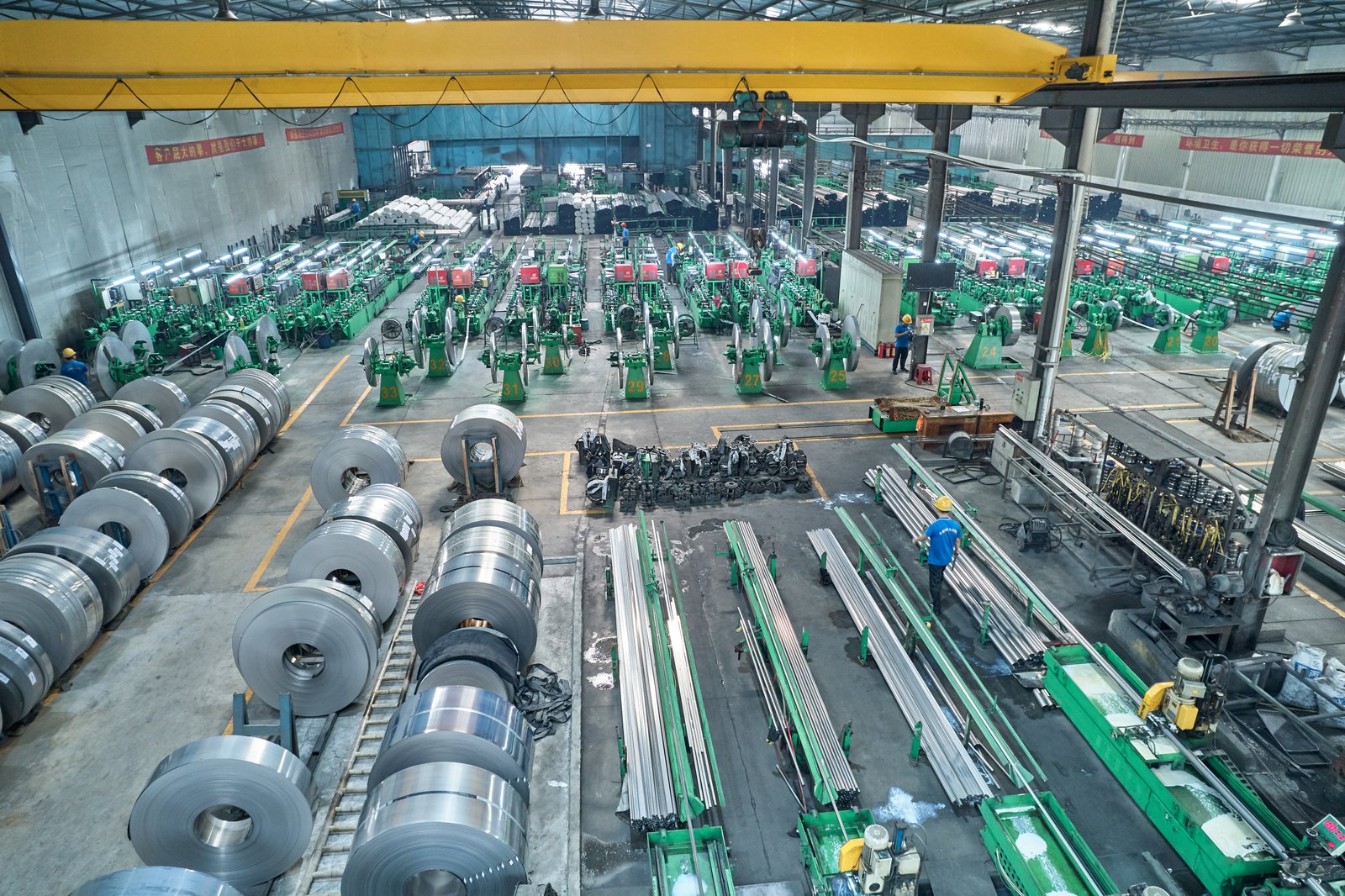
The journey into pipe sizing begins with a clear comprehension of these two primary systems: Nominal Pipe Size (NPS) and Diamètre Nominal (DN). While seemingly straightforward, their nuances are critical for engineers, procurement specialists, and project managers. NPS, rooted in imperial units (inches), is the standard designation in North America and is heavily referenced in ASME (American Society of Mechanical Engineers) standards like ASME B36.10M for carbon steel pipes and ASME B36.19M for stainless steel pipes. It's important to note that for NPS ⅛ to NPS 12, the NPS number and the actual outside diameter (OD) of the pipe are different. For instance, an NPS 2 pipe has an OD of 2.375 inches (60.3 mm). Beyond NPS 14, the NPS number directly corresponds to the OD in inches.
Diamètre Nominal (DN), on the other hand, uses metric units (millimeters) and is the standard in regions following ISO (International Organization for Standardization) and EN (European Standards). ISO 6708 defines DN. A common misconception is that DN directly equals the OD in millimeters. While there's a closer correlation than with smaller NPS sizes, it's still a nominal figure. For example, DN 50 refers to a pipe that is approximately equivalent to NPS 2, and its OD is typically 60.3 mm. The "nominal" aspect means it's a size designator used for reference in selection and standardization, not a precise measurement to be used for detailed calculations without consulting specific standard tables. At MFY, we often encounter projects, particularly in rapidly developing regions like Southeast Asia or the Middle East, where specifications might be drawn from a blend of international standards. Our role involves meticulously cross-referencing these requirements to ensure the stainless steel pipes we supply, whether an NPS 6 Schedule 40 or a DN 150 with a specific wall thickness, meet the exact engineering demands for pressure, temperature, and corrosive resistance. This diligence is part of our commitment to quality and efficient supply chain management.
Understanding Nominal Pipe Size (NPS) in Detail
Nominal Pipe Size (NPS) is a North American set of standard sizes for pipes used for high or low pressures and temperatures. Its historical roots are tied to the Iron Pipe Size (IPS) system of the 19th century. The critical thing to remember with NPS is that the "nominal" aspect means it's a reference name, and the actual dimensions, particularly the outside diameter (OD), require looking up in standard tables like those provided by ASME B36.10M (for carbon steel) and ASME B36.19M (for stainless steel pipes, which is a key product for us at MFY).
For NPS values from ⅛ inch to 12 inches, the NPS designator is smaller than the actual OD of the pipe. For example, an NPS 3 pipe does not have an OD of 3 inches; its actual OD is 3.5 inches (88.9 mm). This can be a common point of confusion. From NPS 14 upwards, the NPS designator directly matches the OD in inches. So, an NPS 14 pipe has an OD of 14 inches (355.6 mm). This distinction is vital for accurate engineering and procurement.
The internal diameter (ID) of an NPS pipe is determined not just by the NPS value but also by the "Schedule" (SCH) number. The schedule number dictates the wall thickness of the pipe. A higher schedule number means a thicker pipe wall and, consequently, a smaller ID for the same NPS. For instance, an NPS 4 Schedule 40 pipe will have a thicker wall and smaller ID than an NPS 4 Schedule 10 pipe, even though both share the same 4.5-inch (114.3 mm) OD. I recall a project with a manufacturing client in the US who needed stainless steel pipes for a high-pressure steam application. They specified NPS 6, but it was crucial to clarify the schedule – they needed Schedule 80 for the pressure rating, not the more common Schedule 40. Getting this detail right from the start, supported by MFY's robust inventory of various schedules, prevented potential operational failures and ensured safety.
Demystifying Diamètre Nominal (DN) and its Applications
Diamètre Nominal (DN) is the international standard designator, primarily used in countries adhering to ISO and European (EN) standards. It's expressed in millimeters. Unlike the sometimes counter-intuitive nature of smaller NPS sizes, DN provides a more direct, albeit still nominal, indication related to the pipe's size. The standard ISO 6708 provides the definition and selection criteria for DN values. For example, DN 50 is commonly understood as the metric equivalent of NPS 2.
The DN number is a convenient, rounded reference to a pipe's bore or sometimes its outside diameter. For many common pipe sizes, the DN value, when multiplied by 25, gives an approximate NPS in inches (e.g., DN 50 ≈ NPS 2, as 50/25=2). However, this is a rule of thumb, not a precise conversion. The actual OD for a given DN size is standardized. For instance, a DN 50 pipe, according to EN 10255 or EN 10220, typically has an OD of 60.3 mm, which is the same as an NPS 2 pipe.
Wall thickness in the DN system is often specified directly in millimeters or by referring to specific pipe series or classes within the relevant EN or ISO standards (e.g., EN 10220 specifies dimensions for seamless and welded steel tubes). This differs from the NPS "Schedule" system. For a construction contractor MFY supplied in Southeast Asia working on a large water treatment facility, the specifications were entirely in DN, with wall thicknesses explicitly stated (e.g., DN 200, 6.3mm wall thickness). Our team at MFY had to ensure that the stainless steel pipes produced and delivered met these exact metric dimensions and tolerances as per EN 10216-5 for seamless stainless steel tubes, demonstrating our capability to adapt to diverse international standards.
Key Differences and Commonalities between NPS and DN
The most apparent difference between NPS and DN is the unit of measurement: NPS uses inches, while DN uses millimeters. This fundamental difference necessitates careful conversion and understanding when dealing with international projects or mixed-standard environments. Beyond units, the way sizes are designated, especially for smaller diameters, varies significantly. As mentioned, NPS ⅛ to 12 do not directly reflect their OD in inches, whereas DN values offer a slightly more intuitive (though still nominal) reference.
Despite their differences, there are established equivalencies for most common pipe sizes. For instance:
- NPS ½ is equivalent to DN 15
- NPS ¾ is equivalent to DN 20
- NPS 1 is equivalent to DN 25
- NPS 2 is equivalent to DN 50
- NPS 4 is equivalent to DN 100
- NPS 6 is equivalent to DN 150
A key commonality is that for many standard sizes, the actual outside diameter (OD) of an NPS pipe and its corresponding DN equivalent is identical. This is crucial for ensuring that flanges, valves, and fittings designed for one system can, with careful selection, be compatible with the other, provided the pressure ratings and wall thicknesses align. For example, an NPS 2 pipe and a DN 50 pipe both typically have an OD of 60.3 mm. This standardization is vital for global trade and is something MFY leverages to serve diverse markets like India, which often sees a mix of US, European, and local IS standards.
However, direct mathematical conversion (1 inch = 25.4 mm) of the nominal size rarely works perfectly and should not be relied upon for precise engineering. For example, NPS 1 isn't DN 25.4; it's DN 25. The systems are based on families of standard sizes that have evolved. It's always best to consult standard conversion tables, such as those found in ASME B36.10M or specific industry handbooks. At MFY, our technical sales team is well-versed in these conversions, assisting clients in markets like Russia or the Middle East to ensure they receive the correct stainless steel pipe dimensions, whether their original specification was in NPS or DN. This expertise is part of our commitment to being more than just a supplier, but a true solutions partner.
Here's a simplified table for common conversions:
| NPS (inches) | DN (mm) | Typical OD (mm) | Typical OD (inches) |
|---|---|---|---|
| ½ | 15 | 21.3 | 0.840 |
| ¾ | 20 | 26.7 | 1.050 |
| 1 | 25 | 33.4 | 1.315 |
| 1 ½ | 40 | 48.3 | 1.900 |
| 2 | 50 | 60.3 | 2.375 |
| 3 | 80 | 88.9 | 3.500 |
| 4 | 100 | 114.3 | 4.500 |
| 6 | 150 | 168.3 | 6.625 |
| 8 | 200 | 219.1 | 8.625 |
| 10 | 250 | 273.0 | 10.750 |
| 12 | 300 | 323.8 | 12.750 |
Note: OD values are typical and should always be verified against the specific standard being used.
NPS uses inchesTrue
Nominal Pipe Size (NPS) is the North American standard that uses inches as its unit of measurement.
DN equals exact ODFalse
DN (Diamètre Nominal) is a nominal size designator like NPS, not an exact measurement of outside diameter.
How are NPS and DN standardized in the piping industry?
Wondering who ensures that an NPS 2 pipe from one mill matches another? Without robust standardization, the piping industry would face chaos and incompatibility. This structured system is key to global trade and project reliability.
NPS and DN are standardized through internationally recognized bodies like ASME (American Society of Mechanical Engineers) for NPS, and ISO (International Organization for Standardization) and CEN (European Committee for Standardization) for DN, ensuring dimensional consistency and material specifications.
These standards organizations play a pivotal role in defining not just the nominal sizes but also the precise outside diameters, wall thicknesses (often through schedules for NPS or specific series/thicknesses for DN), material compositions, manufacturing tolerances, and testing procedures. For MFY, adhering to these standards, such as ASME B36.19M for our stainless steel pipes or relevant EN standards for European markets, is non-negotiable. It's how we guarantee our clients in India, Southeast Asia, or the Middle East receive products that are not only high-quality but also fully compliant and interoperable with their existing or planned infrastructure. For instance, when we export stainless steel tubes to a construction project in the UAE that specifies EN 10217-7, our production and quality control processes are rigorously aligned with these European norms. This meticulous adherence builds trust and ensures the longevity and safety of the installations our products become part of. It’s this commitment to recognized global standards that underpins MFY's reputation for reliability in the competitive stainless steel market.
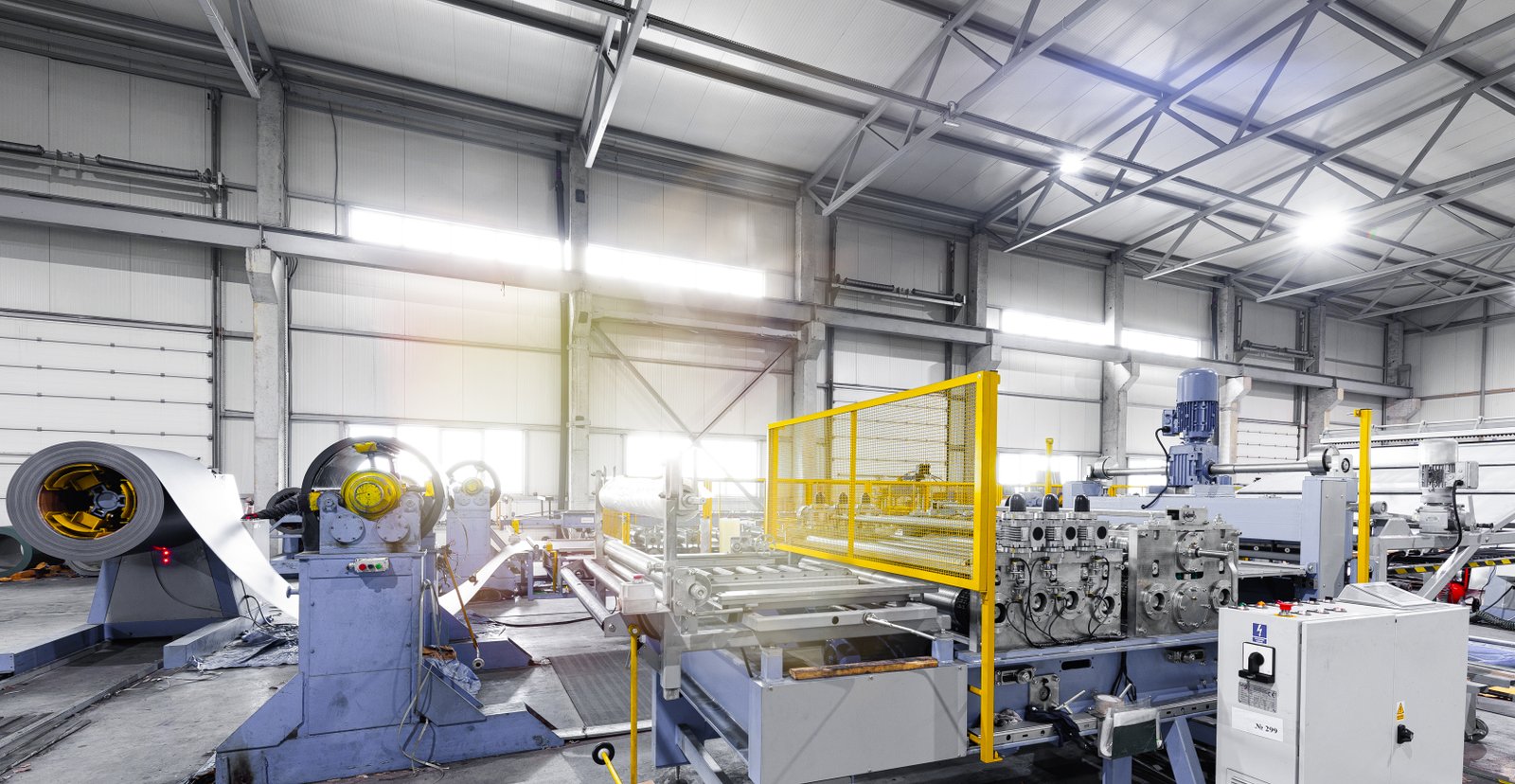
The standardization of NPS and DN is a cornerstone of the modern piping industry, enabling global interoperability, safety, and quality control. This crucial task is undertaken by various national and international standards organizations. For the Nominal Pipe Size (NPS) system, predominantly used in North America, the American Society of Mechanical Engineers (ASME) is the principal body. Key standards include ASME B36.10M, which covers the dimensions of welded and seamless wrought steel pipe, and ASME B36.19M, which specifically addresses stainless steel pipe dimensions – a core product for us at MFY. These documents provide comprehensive tables detailing outside diameters (OD), wall thicknesses for various schedules (from SCH 5S to SCH XXS), and weights per unit length. Adherence to these standards ensures that an NPS 4 Schedule 40 pipe, for example, will have consistent dimensions regardless of the manufacturer, facilitating design, procurement, and installation.
For the Diamètre Nominal (DN) system, which is prevalent in Europe and many other parts of the world, the International Organization for Standardization (ISO) and the European Committee for Standardization (CEN) are the key players. ISO 6708 ("Pipework components — Definition and selection of DN (nominal size)") provides the framework for DN. European Norms (EN), such as EN 10220 (Seamless and welded steel tubes - Dimensions and masses per unit length) or specific material standards like EN 10216 (for seamless steel tubes for pressure purposes) and EN 10217 (for welded steel tubes for pressure purposes), further detail the dimensions and technical delivery conditions for pipes specified by DN. These standards ensure that a DN 100 pipe, for example, meets precise dimensional and material criteria. At MFY, our export operations to markets like Russia or various Southeast Asian nations frequently require compliance with these EN/ISO standards. Our integrated supply chain and robust production capabilities are geared to manufacture stainless steel pipes that meet these exacting requirements, ensuring seamless integration into projects governed by these norms. This global adaptability is a key strength we offer our clients.
The Role of ASME in NPS Standardization
The American Society of Mechanical Engineers (ASME) plays a pivotal role in establishing and maintaining standards for a vast array of mechanical components and systems, with piping being a significant area. Founded in 1880, ASME is a globally recognized organization that develops codes and standards to enhance public safety and quality. For those of us in the steel pipe industry, particularly concerning NPS, ASME's publications are indispensable.
Two of the most frequently referenced standards for pipe dimensions are ASME B36.10M ("Welded and Seamless Wrought Steel Pipe") and ASME B36.19M ("Stainless Steel Pipe"). While B36.10M covers carbon and alloy steel pipes, B36.19M is specifically tailored for stainless steel pipes, which is directly relevant to MFY's product lines. These standards meticulously define the outside diameters for each NPS designation. More critically, they tabulate the various pipe "Schedules" (SCH) which correspond to specific wall thicknesses. For instance, for an NPS 6 pipe, ASME B36.10M lists wall thicknesses for schedules like SCH 10, SCH 40 (standard wall), SCH 80 (extra strong), SCH 160, and others. ASME B36.19M introduced thinner wall schedules for stainless steel, such as 5S and 10S, acknowledging stainless steel's superior strength and corrosion resistance allowing for lighter designs.
The impact of ASME standards extends far beyond North America. Many international projects, especially in industries like oil and gas or power generation, adopt ASME codes due to their comprehensiveness and long history of reliable application. As a global supplier, MFY regularly manufactures and supplies stainless steel pipes conforming to ASME B36.19M for diverse clients, including manufacturing companies in the US requiring robust process piping, or engineering contractors in Asia working on projects that specify ASME compliance. Our quality management systems are designed to ensure that every pipe, whether it's an NPS ½ SCH 10S or an NPS 12 SCH 40S, meets the dimensional tolerances and material specifications set forth by ASME. This commitment allows our clients to build with confidence, knowing their MFY-supplied pipes are standardized for safety and performance. Data from industry reports suggests that adherence to such well-defined standards significantly reduces material incompatibility issues, potentially saving projects up to 5-10% in rework costs related to piping.
ISO and EN Standards for DN Systems
The International Organization for Standardization (ISO) and the European Committee for Standardization (CEN) are the primary bodies governing the DN (Diamètre Nominal) system. ISO is a worldwide federation of national standards bodies, while CEN brings together the national standardization bodies of 34 European countries. Their work ensures that products, services, and systems are safe, reliable, and of good quality, facilitating international trade and cooperation.
For piping, ISO 6708 ("Pipework components — Definition and selection of DN (nominal size)") is a foundational standard, providing the definition of DN. However, the detailed dimensional specifications are often found in specific product standards, many of which are European Norms (EN) adopted by CEN. For example, EN 10220 ("Seamless and welded steel tubes — Dimensions and masses per unit length") provides general tables of dimensions for steel tubes. More specific standards like EN 10216 series (for seamless tubes for pressure purposes) and EN 10217 series (for welded tubes for pressure purposes) detail technical delivery conditions, including materials, testing, and specific dimensions for various applications. For stainless steel tubes, EN 10216-5 (for seamless) and EN 10217-7 (for welded) are particularly relevant to MFY's offerings. These standards typically specify the outside diameter (OD) and wall thickness (WT) in millimeters for each DN size.
The DN system and associated EN/ISO standards are prevalent not only across Europe but also in many parts of Asia, Africa, and the Middle East, often forming the basis of national standards in these regions. MFY's projects in the Middle East, for instance, frequently require stainless steel pipes compliant with EN 10217-7 for applications in desalination plants or petrochemical facilities. Our production lines are equipped to manufacture pipes to these metric specifications, and our quality assurance processes ensure strict adherence to the specified tolerances and material properties. For example, a recent order for a major infrastructure project in Qatar required several kilometers of DN 200 and DN 300 stainless steel pipes according to EN 10217-7, with very specific non-destructive testing (NDT) requirements. MFY successfully delivered, showcasing our capacity to meet complex international standards. Studies by CEN have shown that harmonized standards can reduce trade barriers by up to 80% in certain sectors, highlighting their economic importance.
Ensuring Global Interoperability and Quality Control
The primary purpose of pipe standardization, whether NPS/ASME or DN/ISO/EN, is to ensure global interoperability and provide a framework for quality control. When designers, manufacturers, and constructors all work from the same set of dimensional and material rules, it significantly reduces the risk of incompatibility, project delays, and safety hazards. This is particularly crucial in today's globalized economy where components for a single project might be sourced from multiple countries. MFY, as an international trader and manufacturer, witnesses this daily. Our ability to supply high-quality stainless steel pipes conforming to both major standards systems is a cornerstone of our service to clients in India, Southeast Asia, the Middle East, Russia, and beyond.
Quality control measures, stipulated within these standards, are rigorously implemented at MFY. This includes everything from verifying the chemical composition of raw materials to precise dimensional checks (OD, WT, length, straightness) using calibrated instruments, and conducting mechanical tests (tensile, hardness, flattening, flare) as required by the specific standard (e.g., ASTM A312 for ASME B36.19M pipes, or EN 10217-7). Non-destructive testing, such as hydrostatic testing, eddy current testing, or ultrasonic testing, is also performed according to standard requirements or client specifications to ensure pipe integrity. For instance, a typical manufacturing batch of MFY stainless steel pipes for an export order to an equipment integrator in Europe would undergo multiple QC checkpoints, with data logged for traceability.
Challenges can arise when projects attempt to mix standards without careful engineering review, or when specifications are ambiguous. For example, a project in India might specify "2-inch pipe," which could be interpreted as NPS 2 or a local IS standard pipe that loosely aligns with DN 50. In such cases, MFY's technical team works closely with the client to clarify the exact requirements, considering the application, mating components, and prevailing local practices. We often advise on the closest equivalent and highlight any critical dimensional differences. By ensuring clarity and strict adherence to the chosen standard, MFY helps clients avoid costly errors. A study by the Construction Industry Institute (CII) found that improved material management, which includes accurate specification and adherence to standards, can lead to schedule compression of up to 10%. Our goal at MFY is to contribute to such efficiencies through reliable, standards-compliant products and expert support.
ASME standardizes NPSTrue
ASME B36.10M and B36.19M are the primary standards governing NPS dimensions and schedules for steel pipes in North America.
DN sizes match NPSFalse
While DN and NPS often correspond to similar pipe sizes (e.g., DN 50 ≈ NPS 2), their exact dimensions differ as DN uses metric measurements while NPS uses imperial.
What challenges do engineers face when comparing NPS to DN?
Think converting between NPS and DN is a simple inch-to-millimeter calculation? This assumption can lead to significant engineering challenges, resulting in incompatible parts and costly rework. Understanding these pitfalls is crucial.
Engineers face challenges due to the nominal nature of both systems, inexact mathematical conversions, differing wall thickness designations (Schedule vs. specific mm), varying tolerances, and the risk of misinterpreting equivalencies.
The term "nominal" itself is a key source of confusion; it means "in name only," not the actual measured dimension. So, an NPS 2 pipe is not exactly 2 inches in OD, nor is a DN 50 pipe exactly 50mm in OD or ID. While conversion charts provide good equivalencies (NPS 2 ≈ DN 502, both having an OD of 60.3mm), relying on direct mathematical conversion (e.g., 2 inches x 25.4 mm/inch = 50.8 mm) for the nominal size itself is misleading and can cause errors in selecting mating components. I've seen this happen with engineering and construction contractors where a slight mismatch, perhaps due to assuming a direct conversion for a less common size, led to significant delays in fitting flanges or valves. Furthermore, the way wall thickness is specified—Schedules in the NPS system versus specific millimeter thicknesses or series in the DN system—requires careful cross-referencing against pressure and temperature requirements. At MFY, we often help our clients navigate these intricacies, ensuring the stainless steel pipes they order are perfectly suited for their project, whether it's for a manufacturing plant in Southeast Asia or an oil and gas facility in Russia.
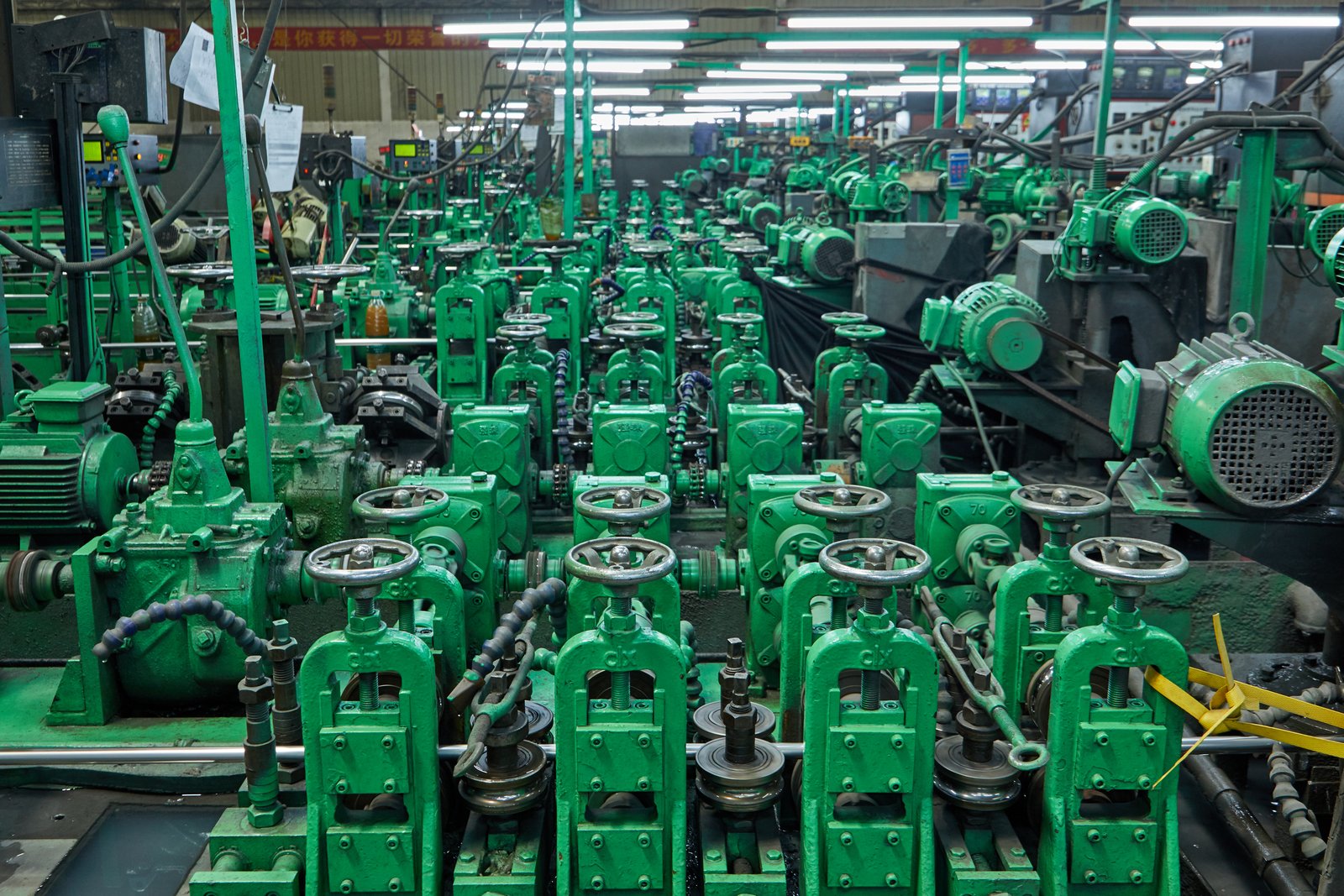
Comparing and converting between Nominal Pipe Size (NPS) and Diamètre Nominal (DN) systems, while essential in global engineering projects, is fraught with potential challenges. These are not mere academic hurdles; they have real-world implications for design accuracy, material procurement, installation, and overall project costs. Engineers must navigate these complexities with care. One of the primary challenges stems from the very definition of "nominal." Both NPS and DN are nominal designators, meaning they are reference names for standardized sizes rather than precise, directly measurable dimensions. An engineer new to these systems might mistakenly assume that NPS 2 means a pipe with a 2-inch outside or inside diameter, or that DN 50 means a 50mm diameter. In reality, as we've discussed, an NPS 2 pipe has an OD of 2.375 inches, and a DN 50 pipe also has an OD of 60.3mm3 (which is 2.375 inches).
The conversion itself is not always a straightforward mathematical exercise of inches to millimeters. While standard tables provide established equivalencies (e.g., NPS 1 = DN 25, NPS 4 = DN 100), these are agreed-upon pairings, not results of a simple formula applied to the nominal numbers. For instance, 1 inch is 25.4 mm, but NPS 1 is paired with DN 25, not DN 25.4. This is because the standards have evolved independently to create practical families of sizes. Relying on multiplying the NPS value by 25.4 to get a DN value (or vice-versa) can lead to selecting a non-standard or incorrect size. I recall an instance where an equipment integrator, a valued MFY client, was sourcing components globally. A junior engineer on their team specified a DN size based on a direct mathematical conversion of an NPS dimension from an American design, leading to a slight but critical mismatch with mating European-sourced valves. This caused a delay until the correct DN-specified stainless steel pipes were expedited by us. Such experiences underscore the importance of using official conversion charts and understanding the underlying standards. Furthermore, the way wall thickness is designated and how it impacts the internal diameter (the critical dimension for flow calculations) presents another layer of complexity that requires careful attention.
The Nuances of "Nominal" vs. Actual Dimensions
The term "nominal" in both NPS and DN signifies that these are standard size designations used for identification and selection, not precise measurements of either the outside diameter (OD) or inside diameter (ID). This is a fundamental concept that, if misunderstood, can lead to significant errors. For instance, an NPS 3 pipe does not have an OD of 3 inches; its actual OD is 3.5 inches (88.9 mm). Similarly, a DN 80 pipe (the equivalent of NPS 3) does not necessarily have an 80mm OD or ID; its OD is also 88.9 mm. The OD for a given NPS/DN pair is usually standardized and consistent across different wall thicknesses.
Where the "nominal" aspect becomes particularly tricky is concerning the internal diameter (ID). The ID is a function of the standardized OD and the pipe wall thickness. Since wall thickness can vary significantly (e.g., different Schedules in the NPS system or specific thicknesses in the DN system), the ID for the same nominal pipe size can change dramatically. An engineer calculating flow rates or pressure drops needs the actual ID. For example, an NPS 6 (DN 150) pipe has an OD of 168.3 mm. If it's Schedule 10S (common for MFY's stainless steel pipes), the wall thickness is 3.4 mm, giving an ID of approximately 161.5 mm. If it's Schedule 40, the wall is 7.11 mm, resulting in an ID of about 154.08 mm. A nearly 7.5 mm difference in ID can significantly impact system hydraulics.
The trap of direct mathematical conversion (e.g., 1 inch = 25.4 mm) is another pitfall. While this conversion factor is correct for general length conversions, it should not be applied to convert an NPS nominal value directly to a DN nominal value, or vice-versa, expecting an exact match. The systems use "families" of sizes that are approximately equivalent but not mathematically derived from each other's nominal designators. For example, NPS 1 ½ has an OD of 1.9 inches or 48.3 mm and is designated as DN 404. A direct conversion of 1.5 inches is 38.1 mm. If an engineer were to look for a DN 38 pipe, they would not find a standard size. MFY once worked with an equipment integrator who faced this issue. They were trying to match a legacy American machine part specified as NPS 1 ¼ (OD 1.66 inches or 42.16 mm) with metric components. The closest standard DN size is DN 32 (OD typically 42.4 mm in some standards or 42.2mm in others, depending on the specific EN/ISO standard). The slight OD difference was manageable with careful fitting selection, but incorrectly assuming a direct conversion could have led them to specify a DN based on 1.25 * 25.4 = 31.75mm, which would be problematic.
Wall Thickness Discrepancies: Schedule vs. Specific Values
A significant challenge when comparing NPS and DN systems lies in how pipe wall thickness is specified and its implications for the internal diameter and pressure rating. The NPS system predominantly uses "Schedule" numbers (e.g., SCH 5, 10, 40, 80, 160, STD, XS, XXS) as defined in standards like ASME B36.10M and B36.19M. A higher schedule number generally indicates a thicker wall for a given NPS, leading to a higher pressure-retaining capability but a smaller internal diameter. For example, for NPS 4 pipe (OD 114.3 mm):
- SCH 10S (stainless steel) has a wall thickness of 3.05 mm.
- SCH 40 (standard wall) has a wall thickness of 6.02 mm.
- SCH 80 (extra strong) has a wall thickness of 8.56 mm.
This variation directly impacts flow capacity and structural strength.
In contrast, the DN system, particularly under European EN standards, often allows for wall thickness to be specified directly in millimeters, or it might refer to specific thickness series or classes within the standard (e.g., EN 10220 lists various wall thicknesses for each DN/OD combination). While there are sometimes "preferred" or common thicknesses, the system offers more direct granularity. This means that finding an exact wall thickness match between an NPS schedule and a DN specified thickness can be challenging. For example, if a design calls for an NPS 3 SCH 40 pipe (wall thickness 5.49 mm), the closest standard DN 80 pipe might have wall thicknesses of, say, 5.0 mm or 5.6 mm depending on the EN standard series available. This discrepancy might be acceptable for some applications but critical for others, especially concerning pressure rating calculations or precise internal bore requirements.
At MFY, we often assist distributors and traders who serve diverse client bases. A distributor in India, for instance, might receive an inquiry for a pipe that can handle a certain pressure, with the client vaguely specifying "equivalent to Schedule 40." If the distributor primarily stocks DN-sized pipes with metric wall thicknesses, our technical team helps identify the appropriate DN pipe with a wall thickness that meets or exceeds the pressure rating of the NPS SCH 40 equivalent, while also considering any ID constraints. This requires careful consultation of pressure tables and standard specifications. For instance, ASME B31.3 (Process Piping) provides formulas for calculating allowable pressure based on material, temperature, OD, and wall thickness, which can be used to compare the capabilities of pipes from different systems. Ignoring these differences can lead to underspecified pipes (safety risk) or overspecified pipes (unnecessary cost).
Impact of Tolerances and Manufacturing Variations
Beyond nominal dimensions and wall thicknesses, manufacturing tolerances also present a challenge when comparing or attempting to interchange pipes from NPS and DN systems. Every standard, whether ASME, ISO, or EN, defines permissible deviations from the nominal dimensions for outside diameter, wall thickness, length, straightness, and ovality. These tolerances are crucial for ensuring fit-up during assembly and for maintaining the design integrity of the piping system.
The challenge arises because the tolerance ranges specified in, for example, ASME B36.10M for an NPS pipe might not be identical to those in EN 10220 for a dimensionally similar DN pipe. For OD, ASME B36.10M typically allows +0.031 inch / -0.016 inch (+0.79mm / -0.4mm) for smaller sizes, while wall thickness tolerance is often -12.5%. EN standards might have different percentage-based or absolute value tolerances. While these differences are often small, they can become critical in applications requiring high precision, such as when using certain types of mechanical joints, compression fittings, or when performing automated welding where consistent fit-up is paramount.
Consider a project in Russia where MFY supplied stainless steel pipes for a food processing plant. The design involved both American-made equipment (specified with NPS piping) and European processing units (requiring DN piping). For the interface points, meticulous attention to tolerances was required. Even if an NPS 2 pipe and a DN 50 pipe have the same nominal OD of 60.3 mm, if one is at the upper end of its OD tolerance and the mating fitting or pipe is at the lower end of its tolerance, achieving a proper seal or fit could be problematic without adjustments. MFY's quality control processes ensure that all our stainless steel pipes are manufactured well within the specified standard tolerances. However, when interfacing components from different standard systems, we advise clients to review the respective tolerance bands carefully. In some cases, selecting a specific manufacturing range within the tolerance or specifying tighter tolerances (if feasible and economical) might be necessary. This proactive approach, which is part of MFY's commitment to delivering one-stop solutions, helps prevent on-site fit-up issues, saving time and resources for our clients.
NPS and DN are nominal sizesTrue
NPS and DN are reference names for standardized sizes, not exact measurements of pipe dimensions.
NPS 2 equals 2-inch ODFalse
NPS 2 pipe has an actual OD of 2.375 inches (60.3mm), not exactly 2 inches.
What strategies can simplify the use of NPS and DN for pipe sizing?
Navigating the complexities of NPS and DN can seem daunting, leading to time-consuming cross-referencing and potential errors. But don't worry, there are effective strategies to streamline this process. Adopting these can significantly reduce confusion and improve project efficiency.
Key strategies include consistently using reliable standard conversion charts, always referring to official ASME, ISO, or EN documents, employing specialized piping design software, and fostering close collaboration with knowledgeable suppliers like MFY for guidance.
At MFY, we believe in empowering our clients. For manufacturing companies, this might mean providing detailed technical datasheets for our stainless steel pipes that clearly list both NPS/Schedule and equivalent DN/wall thickness where applicable. For traders and distributors, we offer training and resources to help them confidently advise their own customers. For instance, many modern piping design software packages now include comprehensive libraries of both NPS and DN standard components, automatically flagging potential mismatches. By leveraging these tools and our expertise, the task of accurate pipe sizing becomes much more manageable. Our goal is to make the procurement of stainless steel pipes, regardless of the originating standard, a smooth and error-free experience for everyone involved in the project.
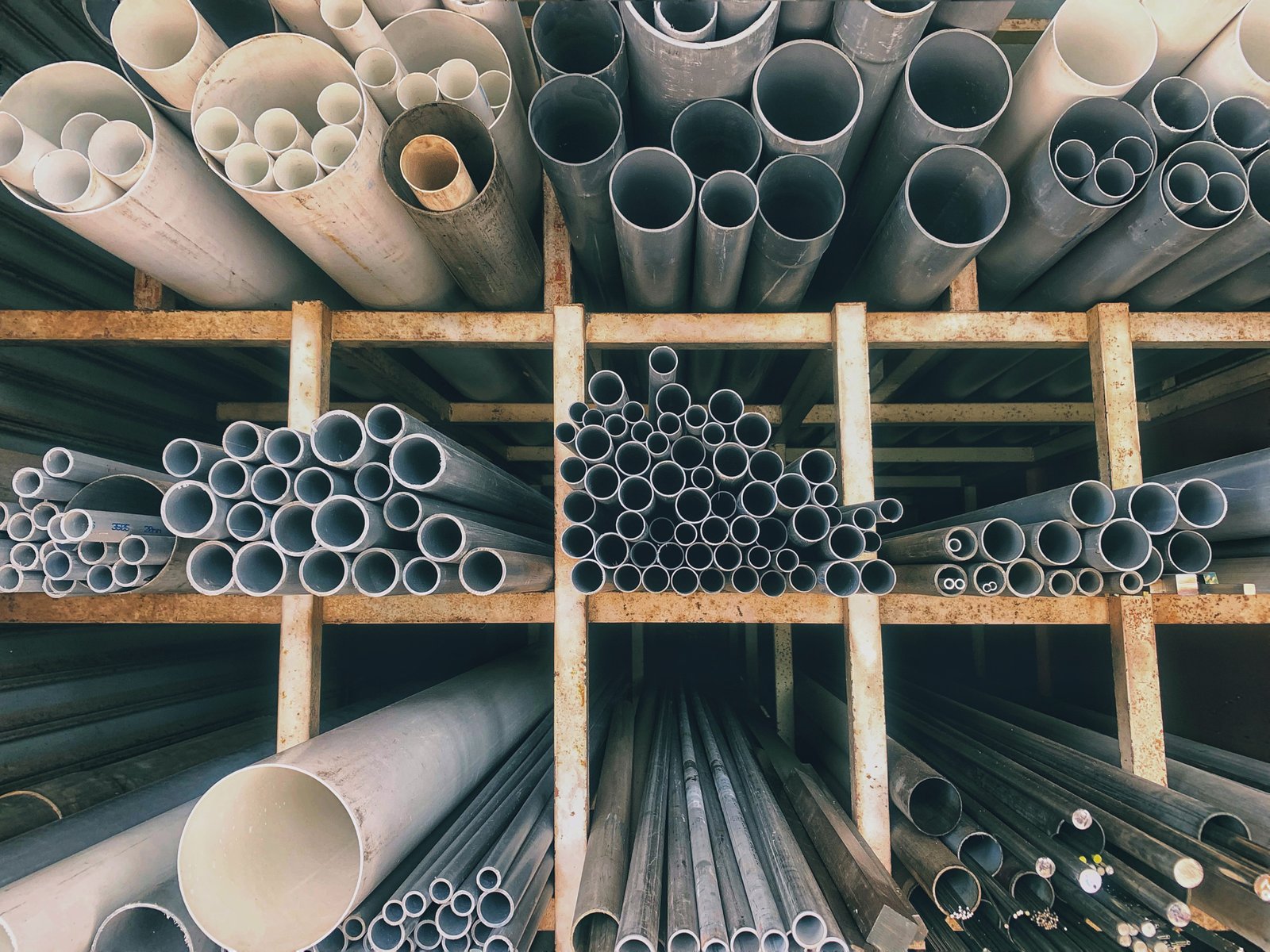
Simplifying the use of Nominal Pipe Size (NPS) and Diamètre Nominal (DN) in projects is crucial for efficiency and accuracy. While the differences can be intricate, adopting systematic strategies can greatly mitigate confusion and reduce the risk of errors. As someone who has navigated these standards for years at MFY, assisting clients across diverse global markets, I can attest to the effectiveness of a proactive and informed approach. The first and most fundamental strategy is education and awareness within the project team. Ensuring that all engineers, designers, procurement officers, and even installation crews have a basic understanding of what NPS and DN signify, their key differences, and the importance of not making assumptions, lays a strong foundation. This can be achieved through internal training sessions, readily available cheat-sheets (like this article aims to be!), and access to standard documentation.
Another vital strategy is the consistent use of authoritative resources. This means relying on official standards documents (ASME B36.10M5, B36.19M, relevant ISO/EN standards) and reputable engineering handbooks or supplier-provided technical data rather than unverified online converters or anecdotal information. At MFY, we equip our sales and technical support teams with comprehensive data for our stainless steel pipe products, clearly cross-referencing NPS and DN equivalents where applicable, along with actual ODs and wall thicknesses. Furthermore, the advent of sophisticated piping design software has been a game-changer. These tools often have built-in libraries of standard pipe sizes and components for both NPS and DN systems, allowing designers to select appropriate items and often flagging incompatibilities. Embracing such digital tools can automate many checks and balances. Finally, clear and unambiguous project documentation is paramount. Specifications should explicitly state the required standard (e.g., "NPS 4 Schedule 40S, ASME B36.19M" or "DN 100, Wall Thickness 6.0 mm, EN 10220/10216-5"), leaving no room for misinterpretation. This clarity streamlines procurement and ensures all stakeholders are on the same page.
Leveraging Standard Conversion Charts and Tables
One of the most practical strategies for simplifying the daily use of NPS and DN is to leverage well-established standard conversion charts and tables. These charts are specifically designed to show the accepted equivalencies between the two systems for common pipe sizes. Critically, these tables don't just convert the nominal designation but also often list the actual outside diameter (OD) for both, highlighting that for many equivalent pairs, the OD is identical (e.g., NPS 2 and DN 50 both having an OD of 60.3 mm). This is invaluable for verifying compatibility.
These essential resources can be found in several places. The primary source is often within the standards documents themselves; for example, ASME B36.10M6 includes tables that list DN equivalents alongside NPS sizes. Reputable engineering handbooks, piping design guides, and the technical documentation provided by experienced manufacturers and suppliers like MFY are also excellent sources. We make it a practice to include such conversion information in the technical specifications for our stainless steel pipes, ensuring our clients have easy access. For example, our datasheets for stainless steel tubes supplied to distributors in Southeast Asia clearly map NPS/Schedule combinations to their corresponding DN and metric wall thickness where a close equivalent exists, along with the actual OD.
However, it's important to understand the limitations of these charts. While they provide excellent guidance for nominal size and OD equivalency, they may not always detail all possible wall thickness comparisons directly. For instance, a chart might show NPS 4 = DN 100. But if you need to compare NPS 4 Schedule 80 with a specific DN 100 wall thickness, you'll still need to look up the actual wall thickness values from the respective standards (ASME B36.10M for SCH 80, and the relevant EN/ISO standard for the DN 100 pipe). Therefore, charts are a starting point, always to be cross-referenced with detailed project requirements (pressure, temperature, fluid) and the specific standards being invoked. Industry data suggests that projects utilizing standardized charts and clear documentation experience up to a 15% reduction in clarification requests related to component sizing.
The Role of Piping Software and Digital Tools
The integration of specialized piping design software and digital tools has revolutionized how engineers and designers handle NPS and DN specifications. Modern Computer-Aided Design (CAD) software, particularly packages tailored for plant and piping design like Autodesk AutoCAD Plant 3D, AVEVA E3D, Intergraph SmartPlant 3D, or Bentley AutoPLANT, come equipped with extensive libraries of standard piping components. These libraries typically include comprehensive catalogs for both NPS (ASME) and DN (ISO/EN) systems, covering various materials, sizes, and schedules/wall thicknesses.
These software tools offer significant advantages. Firstly, they automate the selection process; a designer can simply pick a standard (e.g., ASME B36.19M), a nominal size (e.g., NPS 3), and a schedule (e.g., SCH 10S), and the software will automatically populate the correct OD and wall thickness. This drastically reduces the chance of manual error that might occur when looking up values in tables. Secondly, many of these programs have built-in intelligence to check for compatibility. If a designer attempts to connect an NPS component directly to a DN component without a proper (and standardized) transition piece, the software may flag it as an error or warning. This is invaluable in complex projects with mixed standards. MFY, in its commitment to digital innovation, utilizes advanced ERP and inventory management systems that interface with such data, ensuring that when an order for stainless steel pipes specifies "NPS 2 SCH 40S," our system correctly identifies the material codes corresponding to the 60.3mm OD and 3.91mm wall thickness.
Furthermore, these digital tools facilitate the generation of accurate bills of materials (BOMs), isometric drawings, and reports, all based on consistent and standardized data. This streamlines the entire workflow from design to procurement and fabrication. MFY's internal use of digital tools for processing export orders ensures that the specifications provided by, for example, an engineering contractor in the Middle East for DN-sized stainless steel tubes are accurately translated into production orders, maintaining full traceability and adherence to the required EN standards. The efficiency gains are substantial; a study by the National Institute of Standards and Technology (NIST) on the economic impact of inadequate interoperability in information exchange estimated significant losses, underscoring the value of integrated digital tools that inherently manage such standard data.
Importance of Clear Project Specifications and Supplier Collaboration
Perhaps the most crucial strategy for simplifying the use of NPS and DN lies in establishing crystal-clear project specifications from the outset and fostering strong collaboration with knowledgeable suppliers. Ambiguity in specifications is a primary source of errors, delays, and cost overruns. Project documents, including Process and Instrumentation Diagrams (P&IDs), piping plans, and material requisitions, must explicitly state the pipe standard to be used (e.g., ASME B36.10M, EN 10220), the nominal size (NPS or DN), the schedule or specific wall thickness, and the material grade. For instance, instead of just "2-inch stainless pipe," a clear specification would be "NPS 2, Schedule 40S, ASTM A312 TP316L Stainless Steel Pipe."
Collaborating with experienced and technically proficient suppliers like MFY can provide an invaluable layer of verification and guidance. A good supplier doesn't just take orders; they act as a partner. At MFY, our technical sales team is trained to review client specifications and, if any ambiguities or potential issues are detected (e.g., a request for a non-standard size or an unclear conversion), they proactively engage with the client to clarify requirements. This is especially important for clients like distributors or smaller engineering firms who may not have dedicated piping standards experts in-house. For example, MFY recently assisted an Indian engineering contractor working on a project with mixed US and European equipment. The initial piping list had some inconsistencies in NPS/DN conversions. Our team worked with them to rationalize the pipe list, suggesting standardized equivalents that ensured compatibility while optimizing material availability from our extensive inventory of stainless steel pipes.
This collaborative approach extends to pre-order consultations. MFY encourages clients to discuss their project needs early, allowing us to leverage our integrated supply chain knowledge to advise on the most suitable and readily available options. This might involve suggesting a slightly different but functionally equivalent standard size if it offers better availability or cost-effectiveness, without compromising safety or performance. Such proactive engagement, backed by MFY's strong production capacity and rapid export delivery capability, ensures that clients not only receive the correct materials but also benefit from a more efficient procurement process. Industry best practices show that early supplier involvement in clarifying specifications can reduce procurement lead times by 10-20%.
NPS and DN have identical ODsTrue
For equivalent sizes (e.g., NPS 2 and DN 50), the actual outside diameters are identical at 60.3mm, though wall thicknesses may differ.
NPS directly equals DN numericallyFalse
While NPS 2 corresponds to DN 50, the numbers don't directly convert (2 inches ≠ 50mm). The relationship is standardized, not mathematical.
How can professionals effectively choose between NPS and DN standards in projects?
Facing a new project and wondering whether to specify piping in NPS or DN? This decision can have long-lasting implications for procurement, installation, and maintenance. Choosing wisely requires careful consideration of several key factors.
Professionals should base their choice on project location and local regulations, the origin of primary interconnected equipment, established client or corporate standards, and the regional availability of materials, fittings, and skilled labor familiar with a particular system.
Making this choice is a strategic one, not just a technical detail. As Global Business Director at MFY, I've seen firsthand how this decision impacts project flow, especially in our diverse export markets like India, Southeast Asia, and the Middle East. For instance, a project located in North America will almost certainly default to NPS due to local codes and widespread familiarity. Conversely, a project in Germany will predominantly use DN. However, in regions with a mix of influences, or for international companies with their own global standards, the decision becomes more nuanced7. At MFY, we are equipped to supply high-quality stainless steel pipes to either standard, ensuring our clients have the flexibility they need, supported by our robust production capacity and efficient export delivery.

Choosing between Nominal Pipe Size (NPS) and Diamètre Nominal (DN) standards for a new project is a significant decision that extends beyond mere technical preference. It impacts the entire project lifecycle, from design and procurement to installation, maintenance, and even future modifications. As a key player in the global stainless steel pipe market, MFY has supported countless clients in navigating this choice, ensuring their projects in diverse regions like India, Southeast Asia, the Middle East, and Russia are built on a solid foundation of appropriate standards. The decision isn't always straightforward, especially for international projects or for companies operating across different regulatory environments. A multinational manufacturing company, for example, might aim to standardize its plant designs globally, forcing a choice even if local practices differ.
Several critical factors must be weighed. The geographical location of the project and the prevailing local codes and regulations8 are often the primary drivers. If a project is in the United States or Canada, ASME standards (and thus NPS) are almost invariably mandated for compliance and safety. Similarly, projects within the European Union will typically adhere to EN standards, making DN the natural choice. However, in many parts of the world, there's a confluence of standards, or the client may have a specific preference based on their existing infrastructure or corporate engineering guidelines. The origin of major equipment to be installed (like pumps, turbines, or specialized process units) can also heavily influence the decision; matching the piping standard to that of key equipment simplifies interfacing. Furthermore, considerations of material availability, cost implications, and the familiarity of the local design and construction workforce with a particular system are all practical aspects that demand careful evaluation. At MFY, our extensive experience supplying stainless steel pipes worldwide gives us a unique perspective to advise clients, ensuring they make an informed choice that aligns with their project's specific context and constraints.
Considering Project Location and Regulatory Compliance
The geographical location of a project and the associated local regulatory framework are often the most decisive factors in choosing between NPS and DN standards. In North America (USA and Canada), the industry is heavily standardized around ASME codes, which means Nominal Pipe Size (NPS) is the default and often mandatory choice for most piping systems, especially in regulated industries like oil and gas, chemical processing, and power generation. Building codes and safety regulations will typically reference ASME standards for design, construction, and inspection. Attempting to use DN-based piping in such an environment, unless for very specific, isolated equipment packages, would likely create significant compliance hurdles and integration challenges.
Conversely, in Europe, the European Norms (EN standards) promulgated by CEN are dominant, making Diamètre Nominal (DN) the standard. National regulations within EU member states will typically mandate adherence to these EN standards. Many other regions around the world, including parts of Asia, Africa, the Middle East, and South America, have either adopted ISO/EN standards directly or have developed national standards that are closely harmonized with them. For example, when MFY supplies stainless steel pipes for a major construction project in a Middle Eastern country like the UAE or Saudi Arabia, the specifications often call for EN-compliant materials, meaning DN sizes are specified. Our production facilities are fully capable of manufacturing to these metric standards, ensuring our products meet the stringent quality and dimensional requirements for such markets. According to a report by the International Trade Centre, countries that adopt international standards often see an increase in export competitiveness, as it reduces technical barriers to trade.
In some regions, like India or parts of Southeast Asia, there can be a mix of influences. Local Indian Standards (IS), for example, might have equivalencies to both NPS and DN systems, or a project might involve collaboration between American, European, and local firms, leading to discussions about which system to adopt as primary. In these scenarios, MFY's experience becomes invaluable. We can provide stainless steel pipes conforming to ASME, EN, or even specific IS requirements, and help clients navigate the technical nuances of ensuring compatibility if a hybrid approach is unavoidable. Our understanding of these regional variations allows us to better serve clients like engineering and construction contractors working on international projects.
Aligning with Equipment Specifications and Client Preferences
Beyond regional regulations, the specifications of major or long-lead-time equipment and the established preferences of the client or end-user play a crucial role in deciding between NPS and DN. If critical equipment such as pumps, compressors, turbines, heat exchangers, or specialized process vessels are being sourced from a country or manufacturer that predominantly uses one system (e.g., American-made turbines often have NPS connections, while German-made pumps typically use DN), it is often more practical and cost-effective to standardize the associated piping to match. This minimizes the need for specialized transition fittings, reduces potential points of leakage or failure, and simplifies design and installation.
Client preferences or established corporate engineering standards are also powerful determinants. Many large multinational corporations, especially in sectors like manufacturing, oil and gas, or pharmaceuticals, maintain global engineering standards to ensure consistency, quality control, and streamlined maintenance across all their facilities worldwide. Such a company might mandate the use of NPS (and ASME codes) for all its new plant builds, regardless of geographical location, to leverage standardized designs, spare parts inventories, and personnel training. MFY has served several such global manufacturing clients, supplying ASME-compliant NPS stainless steel pipes to their new facilities in Asia, even when local practice might lean towards DN. Our flexible production capacity and robust inventory management allow us to cater to these specific corporate requirements efficiently.
Conversely, an international client with European origins might mandate DN standards for all their projects. The key for a supplier like MFY is agility and the capability to meet diverse demands. Our fully integrated supply chain, from raw material sourcing to finished pipe production, is designed for this flexibility. We work closely with equipment integrators and engineering contractors to understand these upstream and downstream requirements, ensuring that the stainless steel pipes we provide integrate seamlessly, whether the project ultimately standardizes on NPS or DN. A clear understanding of these preferences early in the project planning phase can prevent costly changes and delays later on.
Material Availability, Cost, and Workforce Familiarity
Practical considerations such as the local availability of piping materials (pipes, fittings, flanges, valves), their relative cost, and the familiarity of the local workforce with a particular system are also vital in the decision-making process. In a region where NPS components are standard and readily stocked by local suppliers, opting for DN might lead to longer lead times and higher costs for materials, as they may need to be specially imported. The reverse is true in regions where DN is the norm. While a global supplier like MFY can deliver either standard rapidly through our export network, the availability of miscellaneous fittings and the ease of local procurement for urgent or small-quantity needs should be considered for the project's overall lifecycle.
Cost implications can extend beyond just the initial purchase price. If a region predominantly uses one system, the tooling, equipment, and expertise for fabrication and installation (e.g., welding procedures, cutting tools, bending machines calibrated for imperial or metric sizes) will be more aligned with that system. Introducing an unfamiliar system might require additional investment in tools or training, or could lead to slower installation rates and potentially lower quality workmanship if the workforce is not adequately experienced. For instance, welders accustomed to fit-up tolerances for NPS pipes might need acclimatization if working with DN pipes that could have slightly different tolerance ranges or end preparations.
The familiarity of the local design engineers, fabricators, and installers with a specific standard system significantly impacts efficiency and quality. Choosing a system that the local workforce is comfortable and proficient with can lead to smoother project execution, fewer errors, and faster completion. MFY, while being a China-based company with strong domestic production capabilities, is acutely aware of these international nuances. Our vision to become a leading international trade and service brand means we not only supply compliant stainless steel pipes but also provide the necessary technical support to help clients navigate these practical considerations, ensuring our rapid export delivery is complemented by informed decision-making at the project level. For example, for a large project in a developing market, we might discuss with the engineering contractor the trade-offs between their preferred standard and the local realities, helping them find an optimal balance.
NPS is mandatory in North AmericaTrue
ASME codes in North America typically require NPS standards for compliance.
DN is optional in EuropeFalse
EN standards in Europe typically mandate DN as the required standard.
Conclusion
Ultimately, mastering NPS and DN distinctions, utilizing precise conversion tools, and consulting with experts like us at MFY are key. This ensures your stainless steel pipe selections are accurate, fostering project success and efficient global supply chain management for all your endeavors.
-
Explains global standardized designations for pipe diameters in North America and internationally ↩
-
Discover nominal dimension differences and implications for pipe selection and compatibility. ↩
-
Analyze precise OD measurements in metric and imperial systems for accurate engineering decisions. ↩
-
Explore standard versus actual dimensions and find common grounds for piping systems internationally. ↩
-
Understand the role of ASME B36.10M in ensuring accurate pipe sizing. ↩
-
Access reliable conversion tables for accurate NPS/DN sizing. ↩
-
Gain insights into making informed decisions in standard selection based on regional influences. ↩
-
Discover key regulatory differences impacting piping standards in major regions such as North America and Europe ↩
Have Questions or Need More Information?
Get in touch with us for personalized assistance and expert advice.
